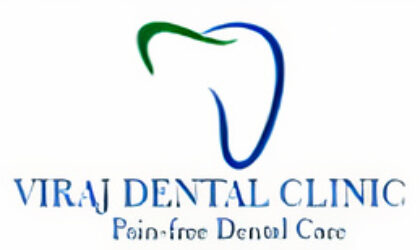Crown Placement
A good crown placement service dental care will deploy a tooth shaped cap that is placed over the teeth to bring back its shape and size.When cemented into place, crowns completely encase the entire visible portion of a tooth that lies at and above the gum line.

What are the problems after crown placement?
Dissatisfaction or sensitivity: Your newly crowned tooth may be sensitive for a few days after the procedure as the anesthesia wears off. If the crowned tooth still has a nerve, you may experience some heat and cold sensitivity. Your dentist may advise you to brush your teeth with toothpaste designed for sensitive teeth. When you bite down, pain or sensitivity usually indicates that the crown is too high on the tooth. They can easily resolve the issue.
Crown has been chipped: Crowns made entirely of porcelain or porcelain fused to metal can chip. If the chip is small, a composite resin can be used to repair it while the crown is still in place. This is usually only a short-term solution.
Crown is sloppy: Occasionally, cement washes out from beneath the crown. Not only does this allow the crown to become loose, but it also allows bacteria to enter and cause decay to the remaining tooth. Contact your dentist’s office if a crown feels loose.
Crown Falls Off: Crowns made entirely of porcelain or fused to meta are susceptible to chipping. If the chip is small, it can be repaired with a composite resin while the crown is still in place.
The crown has a chip: Crowns made entirely of porcelain or porcelain fused to metal are susceptible to chipping. If the chip is small, it can be repaired with a composite resin while the crown is still in place.
Crown has a sloppy appearance: Cement occasionally washes out from beneath the crown. This not only allows the crown to become loose but also allows bacteria to enter and decay the remaining tooth.
What is the Purpose of a Dental Crown Placement?
- To keep a weak tooth (due to decay, for example) from breaking or to hold parts of a cracked tooth together
- To repair an already broken tooth or a severely worn down tooth
- When there isn’t much tooth left, a large filling is used to cover and support a tooth. A dental bridge is held in place with a large filling.
- To conceal crooked or severely discolored teeth, dental implant, cosmetic change
- Save a tooth that has been so badly decayed that it can no longer support a filling.
- Protect a child’s teeth who are at high risk of tooth decay, especially if the child has difficulty maintaining daily oral hygiene.
- Reduce the use of general anesthesia in children who are unable to fully cooperate with the requirements of proper dental care due to age, behavior, or medical history.
- A stainless steel crown is likely to be recommended by a pediatric dentist in such cases.
What Kind of Dental Crown Should I Get?
When you need a crown placement services, you immediately start thinking about the different types of dental crowns and how much they cost. This is because there are numerous types of crowns available today, each with its own set of characteristics based on materials, cost, procedures, and the needs of the patient.
Crowns made of gold
Gold crowns are made of copper and other metals like nickel or chromium. The main benefit of gold crowns is their durability and strength.
Some dentists may recommend a gold crown as the preferred option for back restorations, depending on the needs of each patient. However, due to their color and aesthetics, gold crowns are not a popular choice today.
The main benefits of Gold Crown placement service:
- They wear down slowly, just like natural enamel, and require less of your natural tooth to be removed.
- Tough and resistant.
- They are ideal for posterior (back teeth) restorations, particularly second molars.
The following are the primary disadvantages of gold crowns:
- Poor aesthetics: They do not resemble natural teeth.
Some people may be affected by gold alloy crowns and experience side effects such as allergic reactions or swelling.
2. Completely Porcelain Crowns
This is unquestionably the most popular type of crown in use today. They are completely made of porcelain.
Advantages
- The most suitable option for front tooth restorations.
- They are biocompatible, which means they do not contain any metals and are therefore free of toxins.
However, the primary disadvantages of porcelain crowns are as follows:
- They aren’t as durable as metal crowns. Porcelain crowns can last for a long time if properly cared for.
- Patients suffering from bruxism should choose gold PFM.
3. Crowns Made of Porcelain-Fused-to-Metal (PFM)
They offer both strength (due to their metal construction) and beauty (due to the porcelain coat that covers the cap).
The primary benefits of PFM crowns are:
- They are both attractive and long-lasting.
- They’ve been in business for more than 50 years. We’ve seen how well they work.
- They are less expensive than all-porcelain crowns combined.
4. Crowns made of zirconia
Zirconium is a new material that combines the strength of metal with the beauty of porcelain crowns. High translucent zirconia and layered zirconia crowns have recently become more popular.
The primary benefits of zirconia crowns are:
- They have excellent aesthetics.
- They are durable and long-lasting (with fewer possibilities of chipping or breaking).
- Because zirconia can be cut and shaped in the same dental office, the procedure can be completed in less time. It is not necessary to send them to a dental lab.
- They are biocompatible: because they are metal-free, they are unlikely to cause allergic reactions.
5. E- MAX: Dental Lithium Disilicate Crowns
The most recent type of crown in dentistry is known as E -Max. It is a lithium disilicate-based all-ceramic crown (which is also light and thin).
The primary benefits of E-max crowns are:
- Excellent aesthetics. They look fantastic in your mouth.
- They can be very strong and long-lasting.
The primary disadvantage of E-Max Crowns are as follows:
They could be more expensive, particularly for dentists (who may or may not transfer that cost to you)
Some dentists have reported failures when using E-Max for posterior teeth, particularly when performing multiple units.
How Much Do Dental Crowns Cost?
Now that you’re aware of the various options for dental crowns, you’re probably curious about the prices of the various types of crowns.
Furthermore, in some cases, a core build-up is required before a crown can be placed to help protect the tooth’s integrity.
In the worst-case scenario, you may also require a root canal, which could easily double the overall cost of the procedure.
Crowns can cost anywhere from $500 to $2000 or more in most cases. The range is determined by whether or not you have insurance, what your insurance policy covers, the dental fees charged by your dentist, and the number of additional procedures required to complete treatment.
So, if you’re looking for a low-cost solution, you could spend $400-600 on an indirect resin crown, which is essentially a restoration made by your dentist rather than an outside lab. Consider it a large filling created in your dentist’s lab.
The benefits of this procedure include lower costs and less time spent in the chair (usually one visit). Durability is one of the disadvantages. Indirect resin crowns are recommended as a low-cost long-term solution.
You want to reach out to us for Crown Placement Services in an easy way. You can easily make swift appointments by clicking here.
